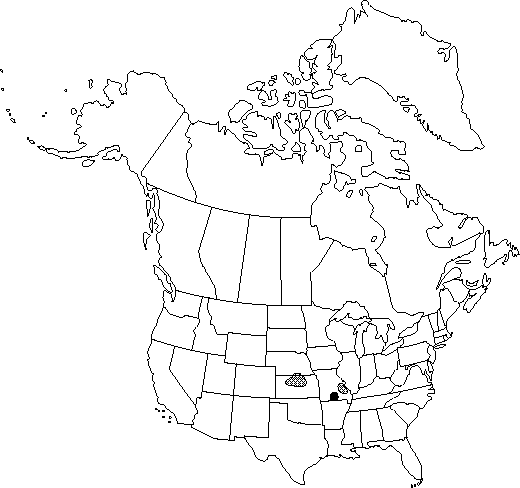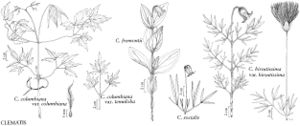Difference between revisions of "Clematis fremontii"
Proc. Amer. Acad. Arts 10: 339. 1875.
FNA>Volume Importer |
imported>Volume Importer |
||
| (2 intermediate revisions by 2 users not shown) | |||
| Line 62: | Line 62: | ||
|publication year=1875 | |publication year=1875 | ||
|special status=Endemic;Illustrated | |special status=Endemic;Illustrated | ||
| − | |source xml=https:// | + | |source xml=https://bitbucket.org/aafc-mbb/fna-data-curation/src/2e0870ddd59836b60bcf96646a41e87ea5a5943a/coarse_grained_fna_xml/V3/V3_641.xml |
|genus=Clematis | |genus=Clematis | ||
|subgenus=Clematis subg. Viorna | |subgenus=Clematis subg. Viorna | ||
Latest revision as of 21:50, 5 November 2020
Stems erect, 1.5-4(-7) dm, moderately to densely villous, sometimes sparsely so near nodes. Leaves simple. Leaf blade ovate-elliptic to broadly ovate, unlobed, 5-14 × 3.5-11 cm, leathery, prominently reticulate adaxially; surfaces abaxially glabrous or sparsely villous-tomentose on veins, not glaucous. Inflorescences terminal, flowers solitary; bracts absent. Flowers narrowly urn-shaped; sepals pale blue-violet to purple, pale green toward tips, lanceolate, 2-4 cm, margins not expanded or 1-3 mm wide, thin or ± thick, not crispate or slightly crispate, tomentose, tips acuminate, spreading to recurved, abaxially glabrous to sparsely villous. Achenes: bodies proximally pubescent with silky or sparse short hairs, distally cobwebby-tomentose; beak 1.5-3(-3.5) cm, proximally silky-tomentose, sparsely appressed-pubescent to nearly glabrous toward tip. 2n = 16.
Phenology: Flowering spring.
Habitat: Calcareous prairies and glades
Elevation: 100-700 m
Distribution

Kans., Mo., Nebr.
Discussion
R. O. Erickson (1943) separated the Missouri plants as Clematis fremontii var. riehlii R. O. Erickson on the basis of their supposedly greater height and more widely spaced, proportionately narrower leaves. As noted by C. S. Keener (1967), however, so much overlap occurs in the ranges of variation of the Missouri and the Kansas-Nebraska populations that recognition of these varieties is not possible.
Selected References
None.
